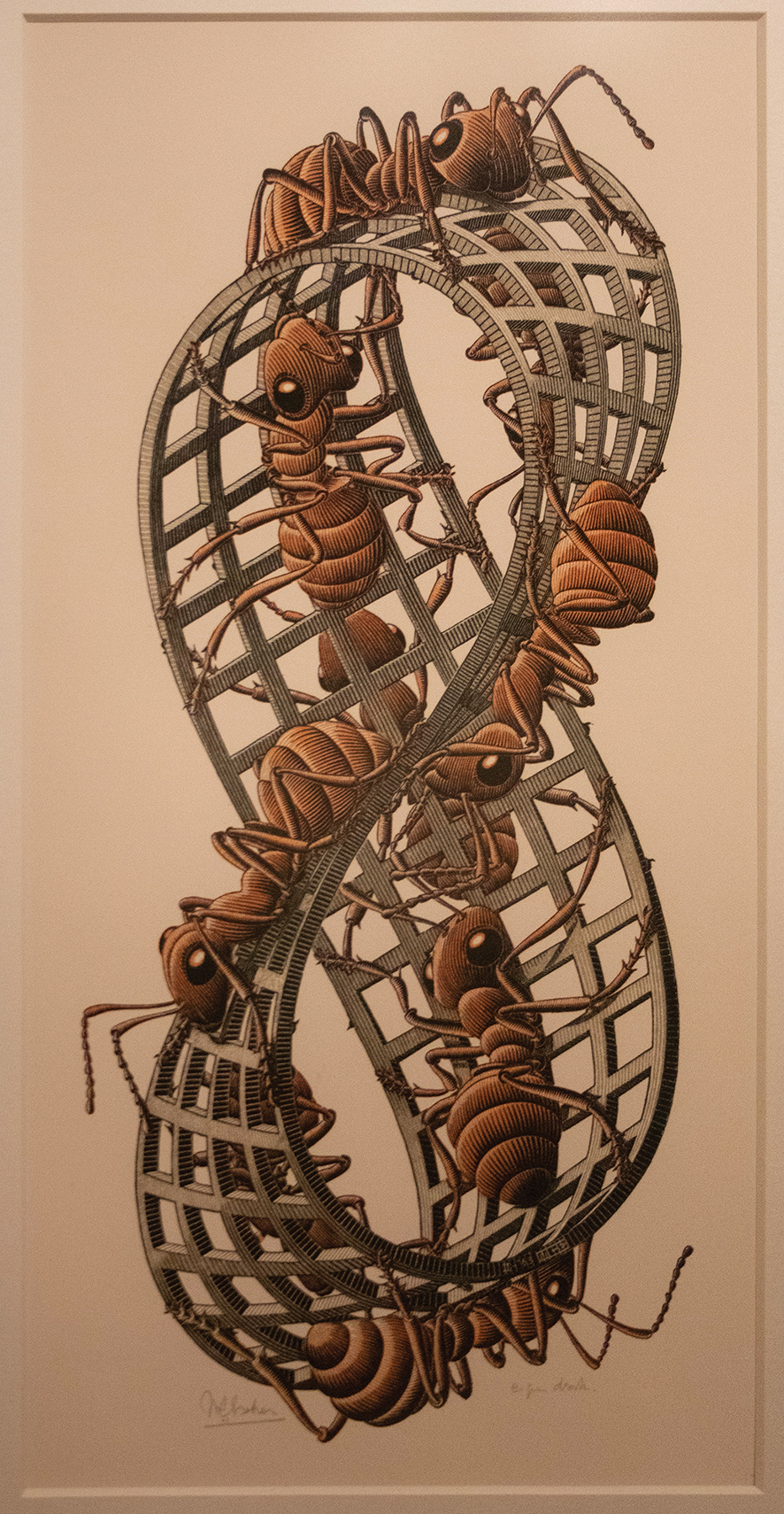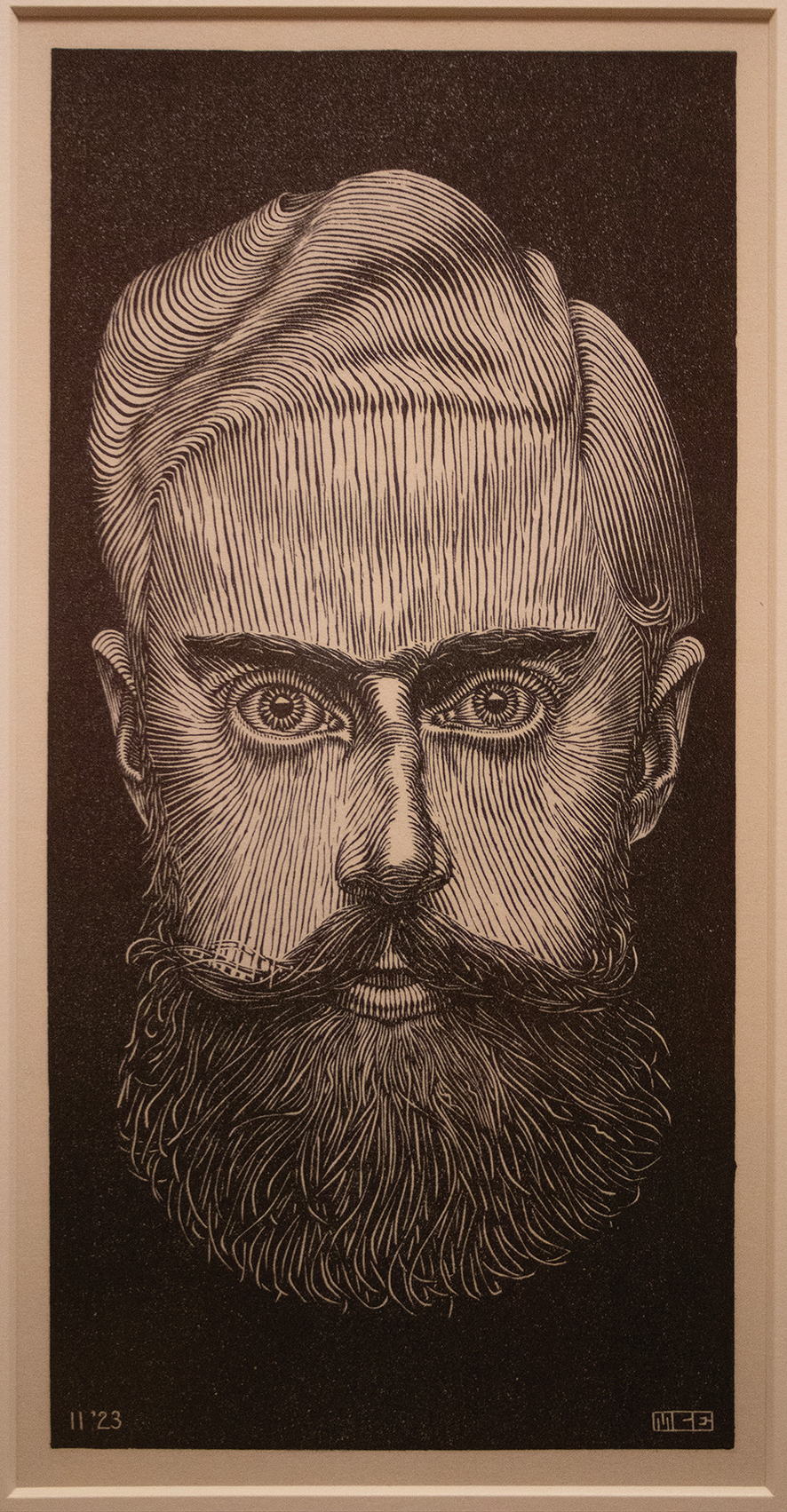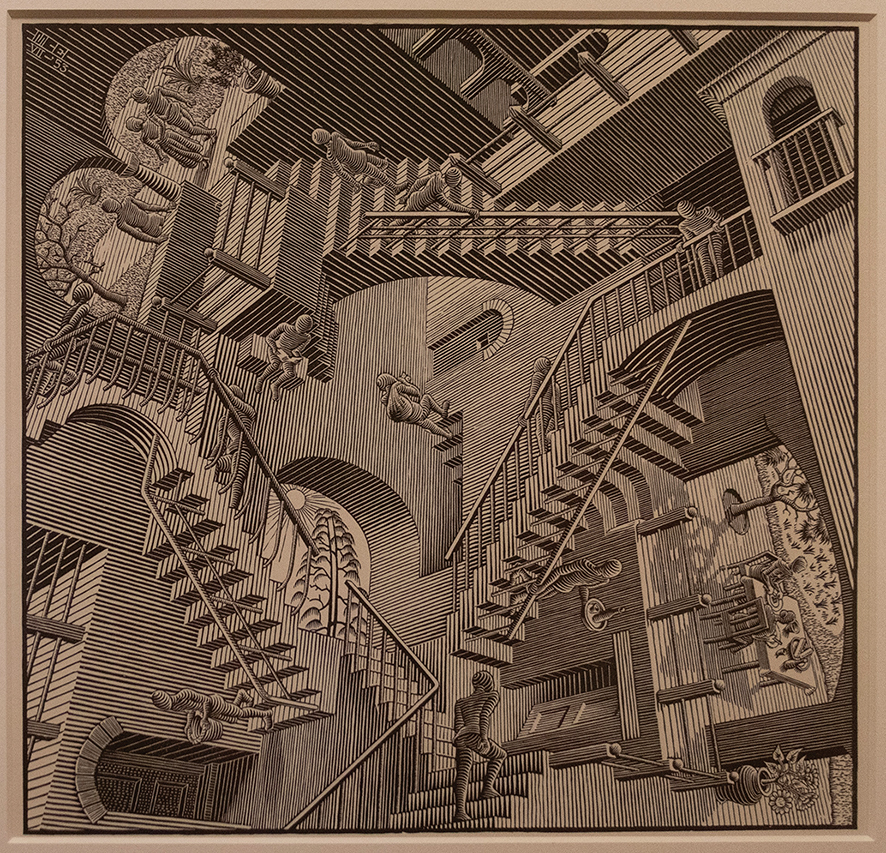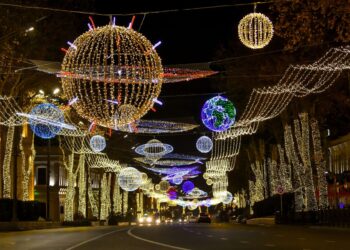I’ve been saying to my friends in Georgia, now that we’re back home, “For a country with only two dimensions, the Netherlands sure has a lot of depth.” I refer, of course, to the Low Countries’ lack of almost and height, in the sense of mountains. But this is made up for with other amazing things.

Following a few hours’ dazed walk through the magnificent and huge Rijksmuseum in Amsterdam, the next day we decamped to The Hague, to a place which for me is the most important place in the entire Netherlands: The Escher Museum, in the former palace of the country’s Queen Mother. I have loved M. C. Escher’s graphic work since I was a boy, but never seen any of it in the originals. Until now.

Once we arrived in the city which hosts the embassies of the world to The Netherlands, we still had to find the museum. Fittingly, even with a map and frequent questions to people on the street, it proved somewhat elusive for a while. I was wondering if we must pass through a 4th dimension to get there… which would be exactly right for a place celebrating an artist whose works frequently seem to do just this. Finally, we arrived at the celebrated doorway, and I entered a dream.

Escher had demonstrated his talent as a draftsman long before he began playing with tessellations (tilings) and 2D works of impossible 3D spaces. His earlier drawings and lithographic prints, of landscapes for example, show this. He was also, like me, only an amateur mathematician, although math and geometry eventually became more and more important in his work.
He also produced many exquisite examples of what is rightly called wood engraving as a print kind, for the hair-thin fineness of its lines. Some of these pieces are only in black ink on white paper; others require several colors, all perfectly aligned or registered. These prints remind me of my own screen printing from ages 18 to 22, in Canada, involving up to 8 colors. If not perfectly registered, they will give you a mess. Get them right, and it’s magic.
And he played with perspective in dazzling ways. Quite a few of his pieces would simply be impossible to achieve is our regular 3D space. Liquid from a waterfall flows back up to the top of the fall. Columns at the back of a building gradually swap places halfway through with those in front. Stairs and floors run in all directions, with people calmly ascending and descending and otherwise traversing them as if gravity had, not no meaning, but many different meanings all at once. Windows on walls, floor and ceilings all show different views of… the same scene. Ants explore a möbius band, from outside to inside and back again.
Everything I was seeing was original, prints or drawings, signed by the man’s own hand. Some pieces, although I have several books of his work, I had never seen before. Others were like old friends met face to face for the first time after a lifetime of long-distance letters. I think my wife also understood me in a whole new way after we came out.
The top floor of the Palace features some interactive works. Like a tilted room in which two people being photographed in the back corners appear one much larger than the other, giant and child. There are mirrored spheres, pieces which change as you walk past them, a wall-size video which includes a dizzying zoom into a 3D version of the famous Mandelbrot Set fractal, and more.

Of all the things and places in The Netherlands, aside from the dear friends we saw. Escher’s museum meant the most to me. It’s only fitting, I think too, that the online recreational mathematics magazine which first published my own piece on infinite tessellation finds was also Dutch.
What’s left? Rotterdam… Utrecht… the other islands… many more lovely villages and towns. The Van Gogh Museum, to which tickets were all gone for our time. A meeting with elderly Theo Janssen, most important living artist of the country in my view, who makes wondrous PVC-pipe Strandbeest creatures powered by the wind, and walks them along the country’s beaches each summer. Netherlands, you still have plenty of dimensions with which to surprise and delight.

BLOG by Tony Hanmer
Tony Hanmer has lived in Georgia since 1999, in Svaneti since 2007, and been a weekly writer and photographer for GT since early 2011. He runs the “Svaneti Renaissance” Facebook group, now with over 2000 members, at www.facebook.com/groups/SvanetiRenaissance/
He and his wife also run their own guest house in Etseri: www.facebook.com/hanmer.house.svaneti














